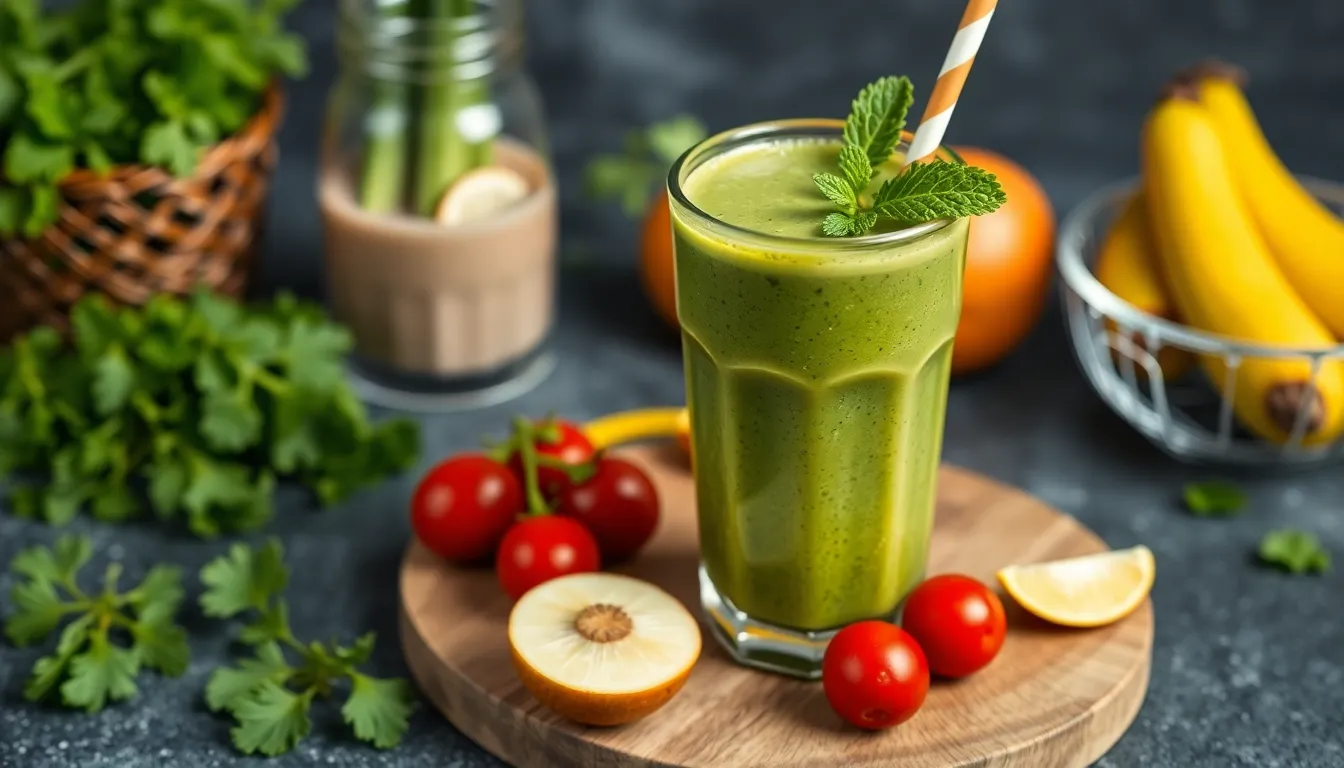How to Make a Vegetable-Based Smoothie: A Quick Recipe
Welcome to Spice Storyteller! In today’s post, we’re diving into the vibrant world of smoothies, specifically focusing on how to create a delicious and nutritious vegetable-based smoothie. Smoothies have become an essential part of many health-conscious diets, offering a quick and easy way to fuel your body with essential nutrients. By incorporating vegetables into your smoothies, you not only enhance their nutritional value but also lower the sugar content compared to traditional fruit-based smoothies. In this article, we will explore the benefits of vegetable-based smoothies, essential ingredients, a quick recipe, and customization options to suit your taste.
Section 1: Why Choose a Vegetable-Based Smoothie?
Vegetable-based smoothies are a fantastic way to boost your daily intake of vitamins, minerals, and antioxidants. Here’s why you should consider making them a part of your diet:
- Nutritional benefits of vegetables in smoothies:
- Vitamins and minerals: Vegetables are packed with essential nutrients that support bodily functions and strengthen the immune system.
- Fiber content: Fiber helps with digestion, stabilizes blood sugar levels, and keeps you feeling full longer.
- Antioxidants: Many vegetables are rich in antioxidants, which help combat oxidative stress and reduce inflammation.
In comparison to fruit-based smoothies, vegetable smoothies have several advantages:
- Lower sugar content: Vegetable smoothies typically contain less sugar than fruit-based ones, making them suitable for those monitoring their sugar intake.
- Balanced energy release: The fiber in vegetables promotes a gradual release of energy, helping to keep you energized throughout the day.
Section 2: Essential Ingredients for Your Smoothie
2.1. Base Ingredients
The base of your smoothie is crucial as it dictates the overall flavor and texture. Here’s a list of popular base liquids:
- Almond Milk
- Coconut Water
- Vegetable Broth
- Coconut Milk
- Water
Choosing the right base can enhance the nutritional profile of your smoothie. For instance, almond milk adds creaminess and a nutty flavor, while coconut water offers hydration and electrolytes.
2.2. Vegetable Options
Here’s a breakdown of some popular vegetables perfect for smoothies, along with their nutritional highlights:
- Spinach: Loaded with iron and vitamins A, C, and K, spinach is a mild-tasting green that blends well into any smoothie.
- Kale: A superfood packed with vitamins C and K, kale adds a slight earthy flavor.
- Cucumber: Refreshing and hydrating, cucumber is low in calories and adds a crisp taste.
- Celery: Rich in antioxidants and vitamins, celery adds a subtle flavor and crunchy texture.
2.3. Optional Add-Ins
Take your smoothie to the next level with these optional add-ins:
- Seeds and nuts: Chia seeds and flaxseeds are excellent sources of omega-3 fatty acids and fiber.
- Superfoods: Spirulina, matcha, and protein powders can provide a nutritional boost.
- Flavor enhancers: Fresh ginger, lemon juice, or a sprinkle of cinnamon can elevate the taste of your smoothie.
Section 3: Quick Recipe for a Vegetable-Based Smoothie
3.1. Ingredients List
Here’s a simple recipe for a refreshing vegetable-based smoothie:
| Ingredient | Measurement | Nutritional Benefit |
|---|---|---|
| Spinach | 1 cup | Rich in iron and vitamins A, C, and K |
| Cucumber | 1/2 medium | Hydrating and low in calories |
| Almond Milk | 1 cup | Dairy-free and low in calories |
| Chia Seeds | 1 tablespoon | High in omega-3 fatty acids |
| Ginger | 1 teaspoon | Anti-inflammatory properties |
3.2. Step-by-Step Instructions
Follow these simple steps to prepare your smoothie:
- Preparation: Start by washing your vegetables thoroughly. Chop the cucumber into smaller pieces to make blending easier.
- Combine Ingredients: In a blender, add the spinach, cucumber, almond milk, chia seeds, and ginger.
- Blend: Blend on high speed until the mixture is smooth and creamy. If the consistency is too thick, add more almond milk or water until you reach your desired texture.
- Taste and Adjust: Taste your smoothie and adjust the flavors as needed. You can add more ginger for spice or a squeeze of lemon juice for brightness.
For the perfect consistency, aim for a smooth, creamy texture with no lumps. If you prefer a thicker smoothie, you can add more spinach or chia seeds.
Section 4: Customization Options
Your vegetable-based smoothie can be as unique as you are! Here are some suggestions for personalizing your smoothie:
- Different Vegetables: Feel free to mix and match vegetables based on your preferences. Try adding beets for sweetness or carrots for a hint of earthiness.
- Adding Fruits: If you desire a touch of sweetness, consider adding half a banana or an apple. Just be mindful of the sugar content.
- Adjusting Flavor and Texture: Experiment with different spices, nuts, or seeds to find what you love best. You can also change the base liquid to alter the flavor.
Section 5: Storage
If you have leftover smoothie or want to prepare in advance, proper storage is key to maintaining freshness:
- Refrigeration: Store your smoothie in an airtight container in the refrigerator for up to 24 hours. However, it’s best consumed fresh for optimal taste and nutrients.
- Freezing: For longer storage, pour your smoothie into ice cube trays or freezer-safe bags and freeze. These can be blended later for a quick smoothie on the go.
In conclusion, vegetable-based smoothies are a delicious and nutritious way to enhance your diet. With their numerous health benefits, customizable options, and easy preparation, they are a perfect addition to your daily routine. So why not give this recipe a try and embark on your journey towards healthier eating? Cheers to vibrant health!




